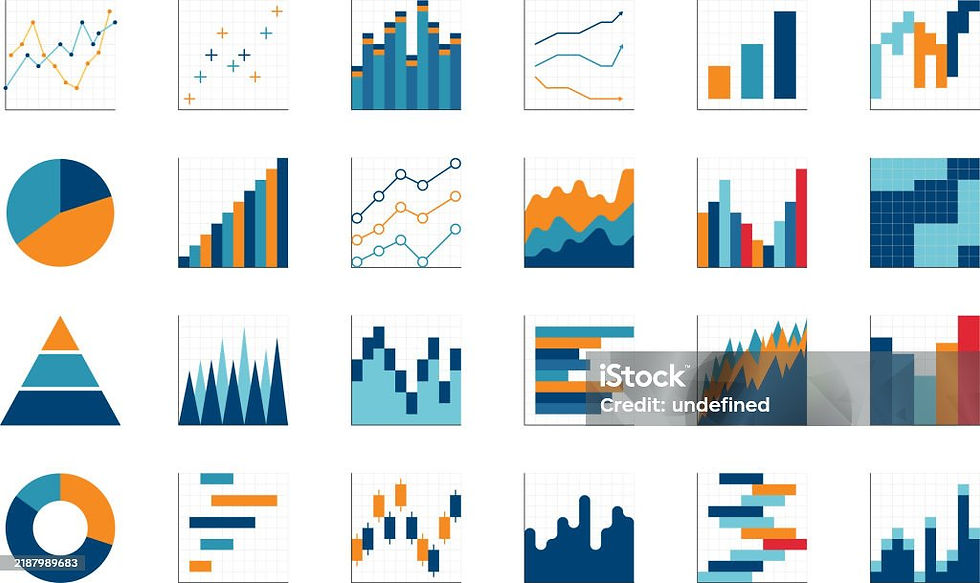How Pareto Chart helps in Tableau visualization?
- Mukilyavimali
- May 16
- 2 min read

INTRODUCTION:
In Tableau - A Leading Business Intelligence and Data Visualization tool, there are different kind of charts available to visualize your insights. Among the all "Pareto Chart" is an excellent one to show relationship between two quantities. A relative change in one quantity results in a proportional change in the other Quantity. Lets dive into Pareto.....
PARETO [80 / 20 RULE]:
Pareto chart is widely used in "Statistical Analysis for Decision Making". It is also called as Pareto Principle or 80-20 Rule. (i.e) Twenty percent of your input is accountable for Eighty percent of your output in simple words.
Examples:
1. 80% of a company profit is generated majorly by 20% of its product.
2. 80% of the system's Failure is due to 20% of its defects.
PARETO CHART:
Pareto Chart is a Combination of Column-Bar Chart and a Line Chart.
Column Bar Chart will be mostly represented in descending order of the frequency.
Line Chart , is being the running total of the frequency or the total is being added at each level of the frequency.

Consider the above Pareto Diagram, It is basically an Error Analysis. The X-Axis Shows the different reasons for errors and the Y-Axis (Dual) one is showing the the count of errors and the the other one is showing the Cumulative percentage of the error.
The dotted blue line is showing the Maximum Threshold level that is 80% as per the 80-20 rule.
So the insight from the above diagram is , the first three bars namely "Broken Lines, Spelling Errors, Missing Title Tag" are the 80% major reason for the error Analysis. Means these three contribute most of the errors than the other 7 reasons respectively.
The X- Axis Categorical or Qualitative values should be descending order so that we can depict the most vital few reasons. This is also one of the Best Practises when you design the Pareto Chart.
USECASES:
There are many use cases where we use Pareto Chart to identify the insights.
Quality Control Analysis , to find out the defects that contributes more complaints in the products.
Inventory Management, to identify the items,that incur majority of Cost.
Customer Service, to analyze Customer Complaints.
Population Control,to analyze Population growth over a period.
Cause and Effect Analysis, to identify the different root cause of the problem.
CONCLUSION:
To conclude that the Pareto Chart is basically used to analysis the Qualitative Data. Basically by using Pareto analysis a Company or Business can easily identify the different and major root causes of the problem. It never gives you the Solution for the problem. It helps us to narrow down our decision making towards the path which is closest to the solution.

